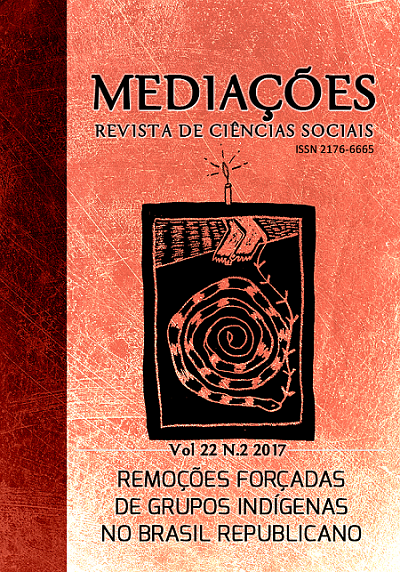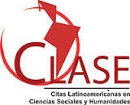Ñemosarambipa: forced displacement among the Guarani in Mato Grosso Do Sul
DOI:
https://doi.org/10.5433/2176-6665.2017v22n2p51Keywords:
Border, Guarani Mobility, Guarani territorialityAbstract
The main elements considered in this work are the location of the Guarani in a transnational territory that are present in four countries: Bolivia, Brazil, Paraguay and Argentina. As a result, Guarani works with notions and concepts of border. In addition, we will explore the Guarani conception of mobility because currently there is a deep ligation of the Guarani people walked toward the East, with the formation of existing indigenous lands and those in training. And finally we board the concept of Ñemosarambipa, which in Guarani means spread. This concept is used by the guarani indigenous to explain the process of scattering of villages and extended families at the time that the implementation of the farm of gado and corresponding loss of land occurred. Thus, we understand that the process of expulsion and confinement left as consequence the "spread" (ñemosarambipa), which meant the decay and social disintegration of Guarani in Mato Grosso do Sul.Downloads
References
BRAND, Antonio Jacó. Os Kaiowá/Guarani no Mato Grosso do Sul e o processo de confinamento: a entrada dos nossos contrários. In: COMISSÃO PRÓ-INDIO DE SÃO PAULO. Rosa Sebastiana Colman| Ñemosarambipa 71 MPF/3ª Região. Conflitos de direitos sobre as terras Guarani e Kaiowá no estado de Mato Grosso do Sul. São Paulo: Palas Athena, 2000. p. 93-131.
BRAND, A. J.; COLMAN, Rosa S. Os Guarani na fronteira do Brasil, Paraguai e Argentina: uma viagem de intercâmbio Guarani. In: REUNIÃO BRASILEIRA DE ANTROPOLOGIA, 27., 2010, Belem. Anais [...]. Belém: UFPA, 2010.
BRAND, Antonio. J. ; ALMEIDA, Fernando Augusto Azambuja de; FERREIRA, Eva Maria L; COLMAN, Rosa Sebastiana e SOUSA, N. M. de. As Fronteiras Guarani na Província do MT (1749-1910). In: II Seminário Internacional América Platina. Dialogo Regional e Dilemas Contemporâneos. v. 1. Campo Grande: Fundação Universidade Federal de Mato Grosso do Sul, 2008.
CEPAL. Panorama Social da América Latina. Publicación de las Naciones Unidas. Santiago de Chile: CEPAL, 2006.
CICCARONE, Celeste. Drama e sensibilidade: migração, xamanismo e mulheres mbyá. Revista de Índias, Vitória, v. 64, n. 230, p. 81-96, 2004.
LADEIRA, Maria Inês. O caminhar sob a Luz: o território Mbyá à beira do oceano. São Paulo: Editora Unesp, 2007.
MELIÀ, bartomeu. Rostro índio de Dios: los ameríndios cristianos. Quito: Abya Yala, 1991.
NICKSON, Andrew. Colonizacion Brasileña en La Region Fronteriza Oriental del Paraguay. In: CONFERÊNCIA SOBRE DESARROLLO DEL AMAZONAS EN SIETE PAÍSES, 1976, Cambridge. Anales ... Cambridge: Universidad de Cambridge/Centre of Latin American Studies, 1976.
NIMUENDAJÚ, Curt Unkel. As Lendas de Criação e Destruição do Mundo como fundamentos da religião dos Apapocúva-Guarani. São Paulo: Hucitec; Universidade de São Paulo, 1987.
PEREIRA, Levi Marques. Mobilidade e Processos de Territorialização entre os kaiowá Atuais. Revista História em Reflexão, Dourados, v. 1 n. 1, Jan/Jun 2007. Disponível em: http://www.periodicos.ufgd.edu.br/index.php/historiaemreflexao/article/view/490/360 Acesso em: 28 jan.2013.
PEREIRA, Levi Marques. Relatório Circunstanciado de Identificação e Delimitação da Terra Indígena Guarani-Kaiowá Arroio-Korá. Município de Paranhos, Mato Grosso do Sul. Brasília: FUNAI, 2001 Documentação FUNAI. (mímeo).
PISSOLATO, Elizabeth de Paula. A duração da pessoa: mobilidade, parentesco e xamanismo Mbya (Guarani). São Paulo: Editora da UNESP, 2007.
Downloads
Published
How to Cite
Issue
Section
License
Copyright (c) 2017 Rosa Sebastiana Colman

This work is licensed under a Creative Commons Attribution 4.0 International License.
Copyright on articles published in Mediações belongs to the author(s): in the case of partial or entire republication of the original publication, we ask author(s) to indicate the original publication in the periodical.
Mediações uses the Creative Commons Attribution 4.0 International license, which allows Open Access, enabling any user to read, download, copy and disseminate its content so long as adequately referenced.
The opinions expressed by the author(s) are their sole responsibility.
































